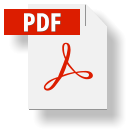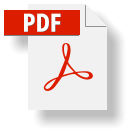

Gradual Release Lesson Plan
5E Lesson Plan
Standard 4 Content Knowledge

© William Eggington 2019
The teacher understands the central concepts, tools of
inquiry, and structures of the discipline.
Rationale 2:
Tools of Inquiry
The methods courses I took as part of the MAT program taught me that there are different tools of inquiry that are better suited for particular areas of content. For example, the gradual release approach is a tool of inquiry that tends to be more effective when teaching lessons that involve students mastering a pre-determined procedure such as math algorithms and the deconstruction of sentences. This approach differs from the tool of inquiry best used when teaching science, creative writing and art. In these subject areas, the best tools of inquiry are the ones that allow students more time to explore without direct guidance such as the 5E approach. Students are then able to reflect on this shared exploratory experience to solidify their understanding of concepts. As my artifacts show, different planning is required for these different approaches. These various tools of inquiry will help me to provide my future students with a deeper understanding of the structures of each discipline they are being taught.Rationale 1:
Structures of the Discipline
During my student teaching at Quail Hollow Elementary I was able to plan and teach a Language Arts lesson designed for the students to identify the genre and author’s purpose of a particular text. I wanted the students to experience some of the structures involved in the discipline of producing a published work. Therefore, I placed the students in pre-determined groups based on ability and allowed them to decide the roles they would take in the creation of their own adaptation of the assigned text from Reading Street. The roles included illustrator, writer, editor, and publisher. This process was new to the students because it didn’t follow a traditional worksheet/graphic organizer format that they were accustomed to completing. This activity pushed them but they thoroughly enjoyed it and were thrilled with the end product. Through this experience, they were able to more deeply understand the author’s purpose of the text they were adapting and had a tangible and memorable experience of what it is like to be a published author. This approach proved to me the power in having students practice the different tools of inquiry related to various content areas and the deeper understanding that results once students better understand the structure of a particular discipline. I intend to offer my future students similar learning experiences.








Mr.Eggington

© William Eggington 2018









